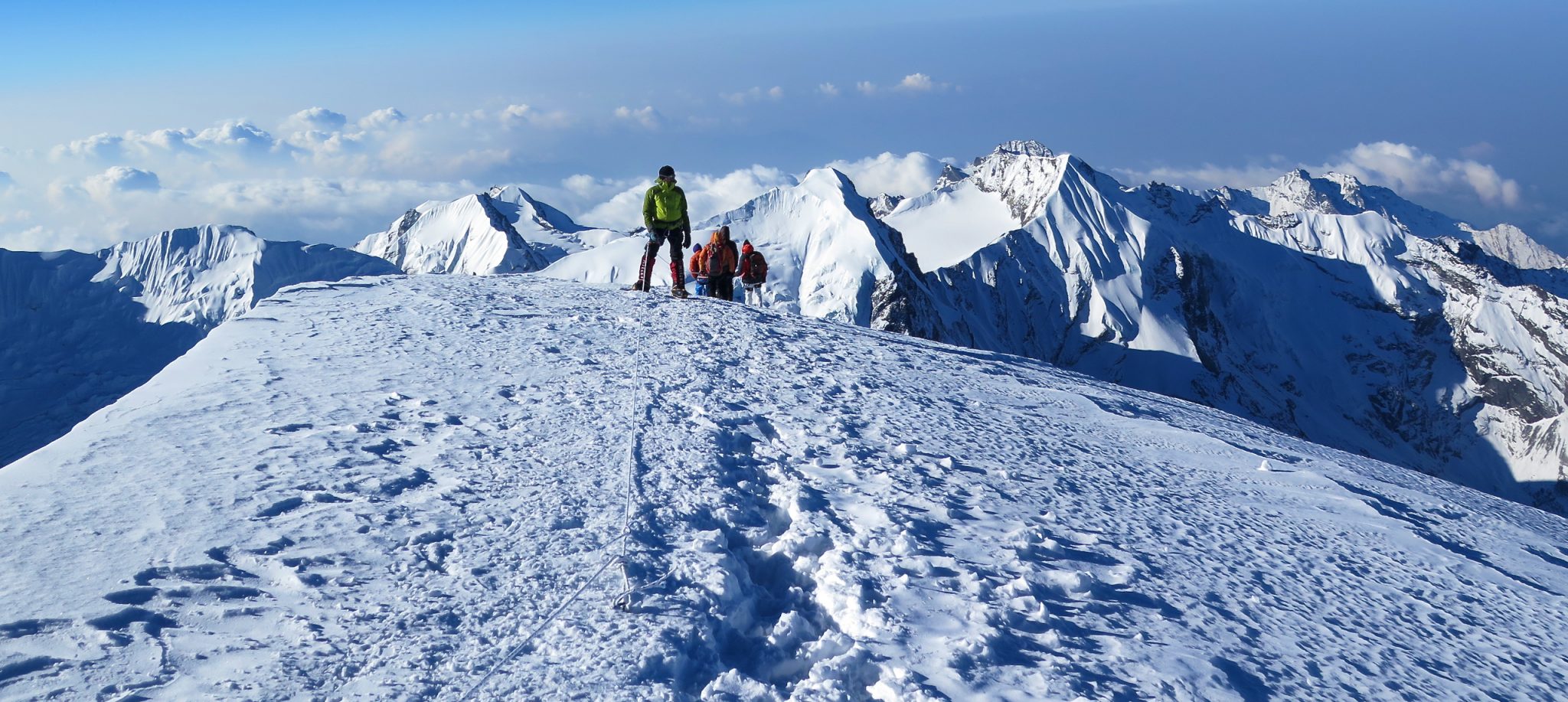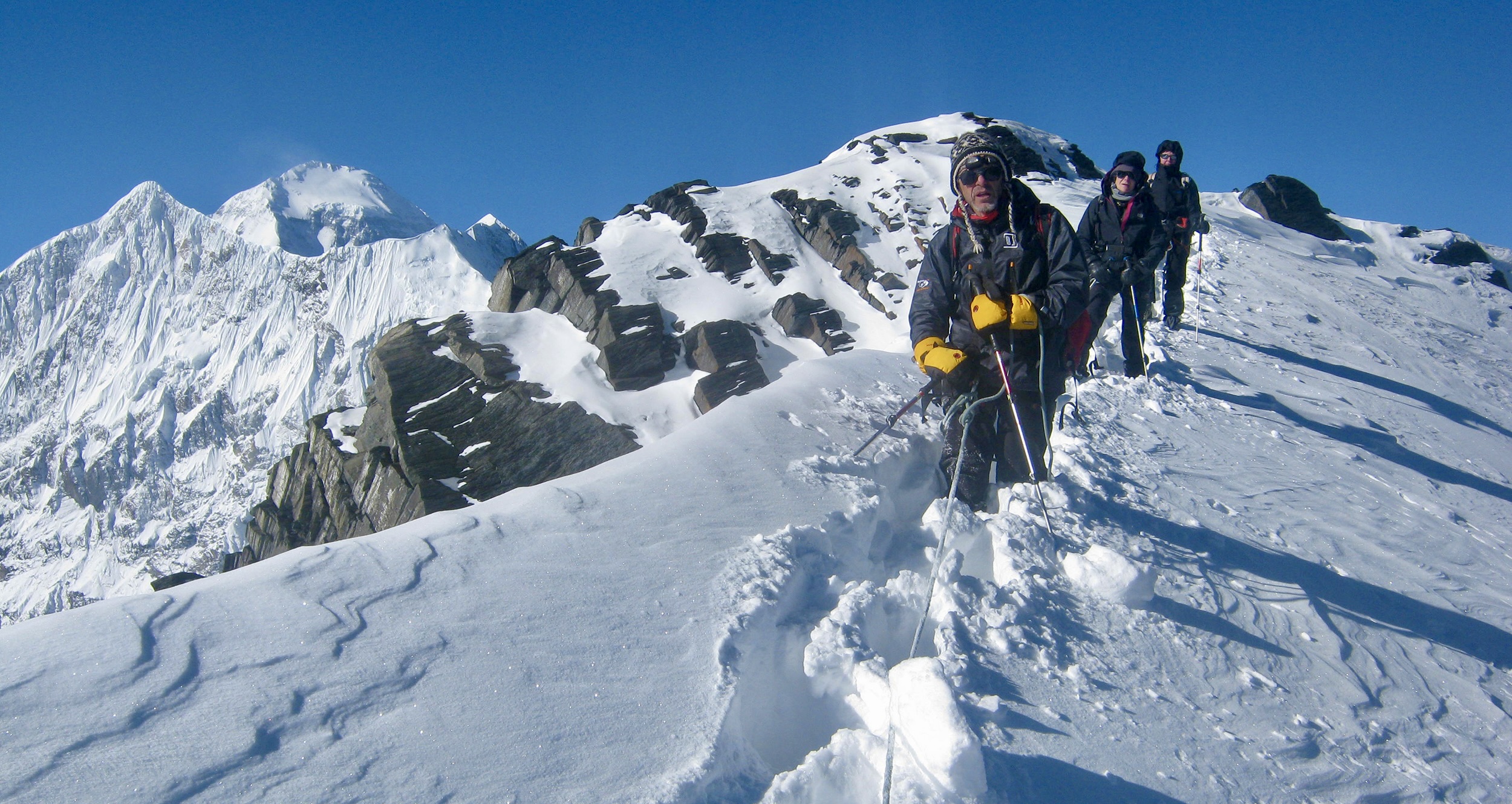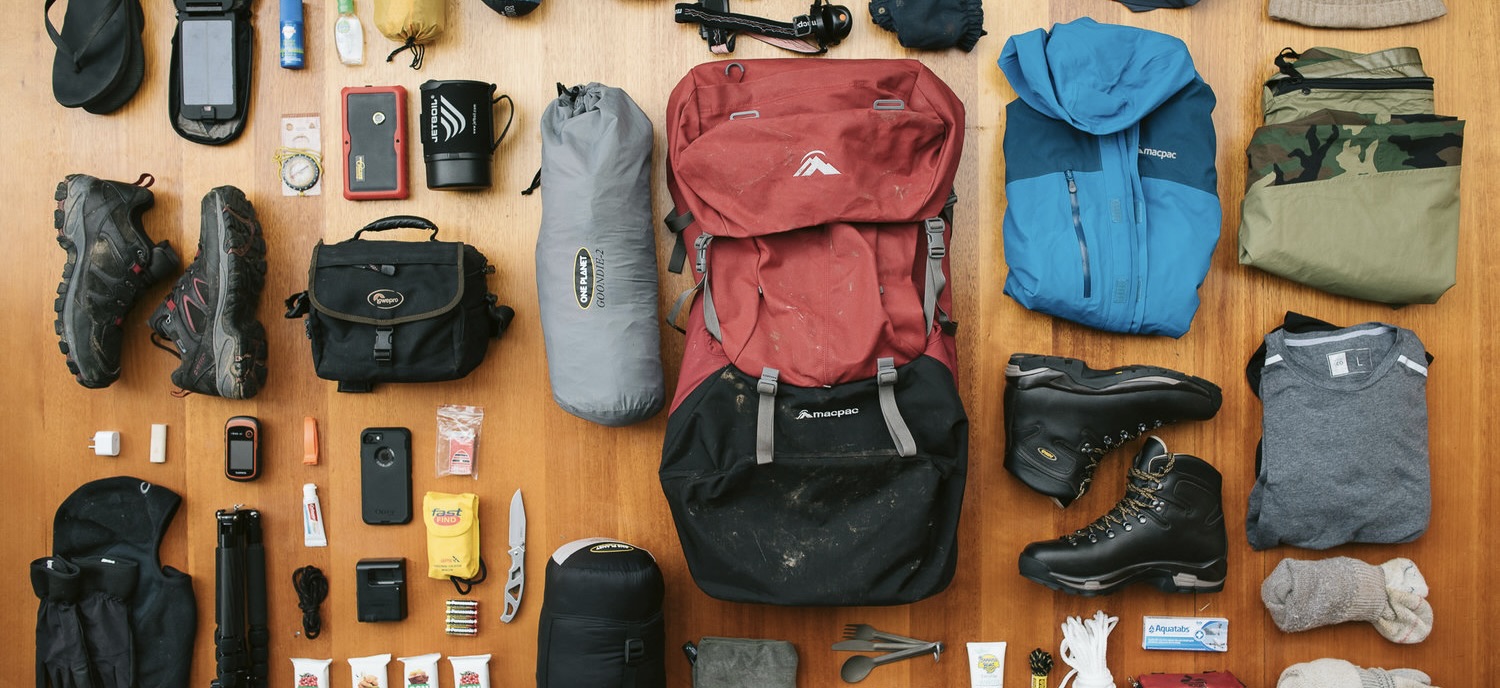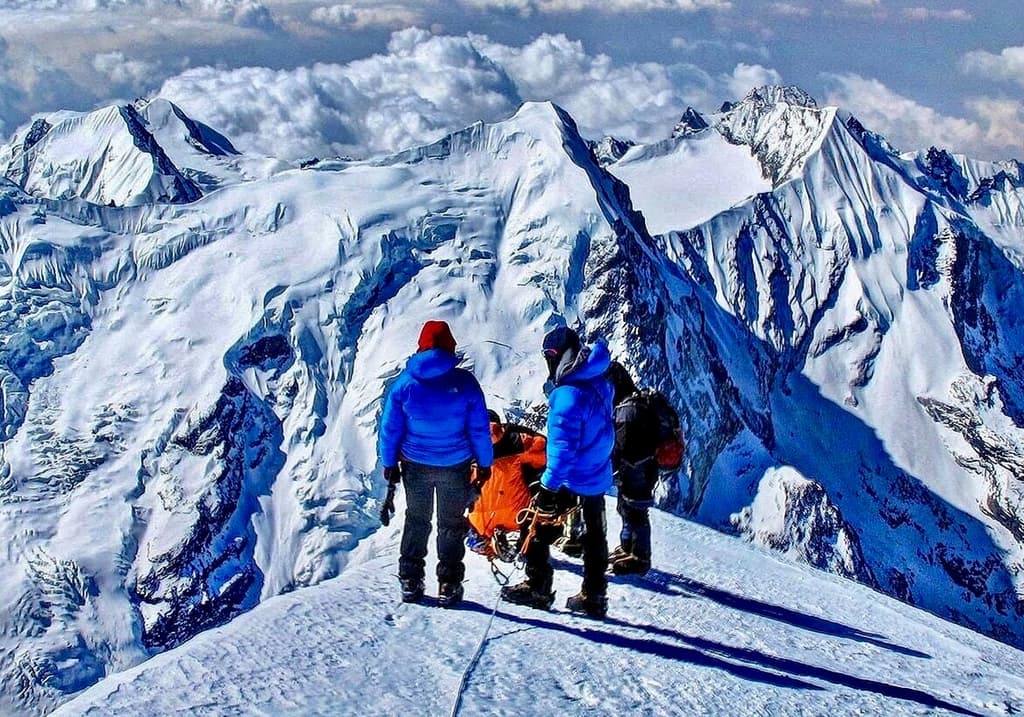Welcome to the world of adventure! Nepal, a treasure trove of natural beauty and diverse landscapes, is a top destination for climbers from all around the world. Whether you're a beginner or an experienced climber, there's always a perfect peak waiting for you in the majestic Himalayas.
If you need any further information, please contact us by email: at [email protected], Phone: at +977- 985 100 5129 (WhatsApp)
Direct Call: +977-9851005129 (Nepal) and +1 916 794 8443 (USA)
In this blog, we'll guide you through everything you need to know about climbing in Nepal as a beginner, from choosing the right peak to essential tips and tricks for a successful climb.

Why Nepal for Climbing?
Nepal is an ideal destination for climbing for several reasons:
Diverse Range of Peaks
- Nepal boasts a diverse range of peaks, from the world's highest, Mount Everest, to various trekking peaks suitable for climbers of all skill levels. This variety ensures that both experienced climbers and beginners can find a suitable challenge.
Stunning Scenery
- The breathtaking landscapes of the Himalayas offer climbers a truly unforgettable experience. From snow-capped mountains to lush valleys, the scenery in Nepal is unparalleled, making it a dream destination for climbers and nature enthusiasts alike.
Rich Culture
- Climbing in Nepal offers a unique opportunity to immerse oneself in the country's rich cultural heritage. Trekkers and climbers can experience local customs, traditions, and cuisine, making their journey even more memorable.
Well-established Trekking Infrastructure
- Nepal has a well-developed trekking infrastructure that caters to climbers worldwide. The presence of numerous trekking agencies, experienced guides, and comfortable teahouses along popular trekking routes ensures that climbers have access to the necessary resources and support for a safe and enjoyable climb.
Accessible Trekking Peaks
- Nepal offers a wide range of trekking peaks that are accessible to beginner climbers. These peaks often require minimal technical skills, making them an ideal starting point for those new to mountaineering.
Adventure Tourism
- Nepal has a long-standing history of adventure tourism, and climbing is an integral part of it. This has resulted in the availability of experienced climbing guides, porters, and support staff who are well-versed in catering to the needs of climbers.
Best Climbing Peaks for Beginners (Top 5 easiest mountains to climb in Nepal for beginners)
Nepal offers a variety of climbing peaks suitable for beginners, providing an excellent introduction to mountaineering. Here are five popular climbing peaks ideal for those just starting out:
Island Peak Climbing (6,189m)
Also known as Imja Tse, Island Peak is a popular choice for beginner climbers due to its non-technical nature and relatively short climbing period. The peak is located in the Everest region and offers breathtaking views of the surrounding mountains, including Everest, Lhotse, and Nuptse.

Keynotes on Island Peak Climbing
Here are some additional keynotes to consider when planning an Island Peak climbing expedition:
Duration: The duration of an Island Peak climbing expedition can vary depending on the route taken and the amount of time spent acclimatizing. Typically, the climb itself takes around 2-3 days, but the total duration of the expedition may be 14-20 days.
Cost: The cost of an Island Peak climbing expedition can vary depending on factors such as guide services, permits, equipment rentals, and transportation. It is important to budget for all of these expenses when planning the expedition.
Season: The best time to climb Island Peak is during the spring (March to May) or the fall (September to November), when the weather is usually clear and dry. Climbing during the winter or monsoon season is not recommended due to the risk of snow and rain.
Altitude sickness: Altitude sickness is a serious concern when climbing Island Peak, and climbers should be aware of the symptoms and how to prevent and treat it.
Training: To prepare for an Island Peak climbing expedition, climbers should engage in physical training such as hiking, running, and strength training. It is also recommended to spend time at high altitudes prior to the climb to acclimatize.
Accommodation: Accommodation during an Island Peak climbing expedition usually consists of teahouses or camping. Teahouses are small guesthouses located along the trekking route, while camping involves setting up tents at designated camping sites.
Safety: Safety should be a top priority during an Island Peak climbing expedition. It is important to choose a reputable guide service and to follow all safety protocols and guidelines while on the mountain.
Mera Peak Climbing (6,476m)
Mera Peak, situated in the Everest region, is known for its stunning panoramic views of the surrounding peaks, including five of the world's 8,000-meter peaks. This peak requires basic mountaineering skills and offers a great introduction to high-altitude climbing for beginners.

Keynotes on Mera Peak climbing
Here are some key points to consider when planning a Mera Peak climbing expedition:
Altitude: Mera Peak is a high-altitude mountain and climbers will need to acclimatize properly to avoid altitude sickness.
Physical fitness: Climbing Mera Peak requires a good level of physical fitness and endurance. You should be prepared for long days of hiking and climbing in challenging terrain.
Climbing skills: While Mera Peak is a non-technical climb, it does require some basic mountaineering skills such as using crampons and an ice axe. Climbers should have prior experience with these tools.
Guide and permits: Climbing Mera Peak requires a licensed guide and the necessary permits and fees. It is important to choose a reputable guide service and to obtain the required permits before starting the climb.
Weather: The weather in the Himalayas can be unpredictable, and climbers should be prepared for cold temperatures, strong winds, and potential storms.
Equipment: You will need to bring appropriate climbing gear and clothing, including crampons, an ice axe, a harness, a helmet, and warm clothing.
Duration: The duration of a Mera Peak climbing expedition can vary depending on the route taken and the amount of time spent acclimatizing. Typically, the climb itself takes around 4-6 days, but the total duration of the expedition may be 16-20 days.
Cost: The cost of a Mera Peak climbing expedition can vary depending on factors such as guide services, permits, equipment rentals, and transportation. It is important to budget for all of these expenses when planning the expedition.
Season: The best time to climb Mera Peak is during the spring (March to May) or the fall (September to November), when the weather is usually clear and dry. Climbing during the winter or monsoon season is not recommended due to the risk of snow and rain.
Safety: Safety should be a top priority during a Mera Peak climbing expedition. It is important to choose a reputable guide service and to follow all safety protocols and guidelines while on the mountain.
Lobuche East Climbing (6,119m)
Lobuche East, in the Khumbu region, is a more challenging but achievable goal for beginners. It requires some technical skills, such as navigating crevasses and steep snow slopes, but with proper guidance and training, it can be conquered successfully.
Keynotes on Lobuche East climbing
Here are some key points to consider when planning a Lobuche East climbing expedition:
Altitude: Lobuche East is a high-altitude mountain and climbers will need to acclimatize properly to avoid altitude sickness.
Physical fitness: Climbing Lobuche East requires a good level of physical fitness and endurance. You should be prepared for long days of hiking and climbing in challenging terrain.
Climbing skills: While Lobuche East is a non-technical climb, it does require some basic mountaineering skills such as using crampons and ice axes. Climbers should have prior experience with these tools.
Guide and permits: Climbing Lobuche East requires a licensed guide and the necessary permits and fees. It is important to choose a reputable guide service and to obtain the required permits before starting the climb.
Weather: The weather in the Himalayas can be unpredictable, and climbers should be prepared for cold temperatures, strong winds, and potential storms.
Equipment: You will need to bring appropriate climbing gear and clothing, including crampons, ice axe, a harness, a helmet, and warm clothing.
Duration: The duration of a Lobuche East climbing expedition can vary depending on the route taken and the amount of time spent acclimatizing. Typically, the climb itself takes around 3-4 days, but the total duration of the expedition may be 14-18 days.
Cost: The cost of a Lobuche East climbing expedition can vary depending on factors such as guide services, permits, equipment rentals, and transportation. It is important to budget for all of these expenses when planning the expedition.
Season: The best time to climb Lobuche East is during the spring (March to May) or the fall (September to November), when the weather is usually clear and dry. Climbing during the winter or monsoon season is not recommended due to the risk of snow and rain.
Safety: Safety should be a top priority during a Lobuche East climbing expedition. It is important to choose a reputable guide service and to follow all safety protocols and guidelines while on the mountain.
Yala Peak Climbing (5,732m)
Yala Peak, located in the Langtang region, is an ideal choice for those looking for a less technical and more straightforward climb. The ascent is relatively easy, with a well-defined trail leading to the summit. The peak offers stunning views of the Langtang range, Ganesh Himal, and the Tibetan border.
Keynotes on Yala Peak climbing
Here are some key points to consider when planning a Yala Peak climbing expedition:
Altitude: Yala Peak is a high-altitude mountain and climbers will need to acclimatize properly to avoid altitude sickness.
Physical fitness: Climbing Yala Peak requires a good level of physical fitness and endurance. You should be prepared for long days of hiking and climbing in challenging terrain.
Climbing skills: While Yala Peak is a non-technical climb, it does require some basic mountaineering skills such as using crampons and ice axes. Climbers should have prior experience with these tools.
Guide and permits: Climbing Yala Peak requires a licensed guide and the necessary permits and fees. It is important to choose a reputable guide service and to obtain the required permits before starting the climb.
Weather: The weather in the Himalayas can be unpredictable, and climbers should be prepared for cold temperatures, strong winds, and potential storms.
Equipment: You will need to bring appropriate climbing gear and clothing, including crampons, ice axe, a harness, a helmet, and warm clothing.
Duration: The duration of a Yala Peak climbing expedition can vary depending on the route taken and the amount of time spent acclimatizing. Typically, the climb itself takes around 2-3 days, but the total duration of the expedition may be 10-14 days.
Cost: The cost of a Yala Peak climbing expedition can vary depending on factors such as guide services, permits, equipment rentals, and transportation. It is important to budget for all of these expenses when planning the expedition.
Season: The best time to climb Yala Peak is during the spring (March to May) or the fall (September to November), when the weather is usually clear and dry. Climbing during the winter or monsoon season is not recommended due to the risk of snow and rain.
Safety: Safety should be a top priority during a Yala Peak climbing expedition. It is important to choose a reputable guide service and to follow all safety protocols and guidelines while on the mountain.
Pisang Peak Climbing (6,091m)
Pisang Peak lies in the Annapurna region and is considered a moderately challenging trekking peak suitable for beginners with some prior climbing experience. The ascent requires basic technical skills, such as using crampons and ice axes, but the overall climb is less demanding compared to other peaks in the region.

Keynotes on Pisang Peak climbing expedition
Here are some key points to consider when planning a Pisang Peak climbing expedition:
Altitude: Pisang Peak is a high-altitude mountain and climbers will need to acclimatize properly to avoid altitude sickness.
Physical fitness: Climbing Pisang Peak requires a good level of physical fitness and endurance. You should be prepared for long days of hiking and climbing in challenging terrain.
Climbing skills: While Pisang Peak is a non-technical climb, it does require some basic mountaineering skills such as using crampons and ice axe. Climbers should have prior experience with these tools.
Guide and permits: Climbing Pisang Peak requires a licensed guide and the necessary permits and fees. It is important to choose a reputable guide service and to obtain the required permits before starting the climb.
Weather: The weather in the Himalayas can be unpredictable, and climbers should be prepared for cold temperatures, strong winds, and potential storms.
Equipment: You will need to bring appropriate climbing gear and clothing, including crampons, ice axe, a harness, a helmet, and warm clothing.
Duration: The duration of a Pisang Peak climbing expedition can vary depending on the route taken and the amount of time spent acclimatizing. Typically, the climb itself takes around 2-3 days, but the total duration of the expedition may be 16-20 days.
Cost: The cost of a Pisang Peak climbing expedition can vary depending on factors such as guide services, permits, equipment rentals, and transportation. It is important to budget for all of these expenses when planning the expedition.
Season: The best time to climb Pisang Peak is during the spring (March to May) or the fall (September to November), when the weather is usually clear and dry. Climbing during the winter or monsoon season is not recommended due to the risk of snow and rain.
Safety: Safety should be a top priority during a Pisang Peak climbing expedition. It is important to choose a reputable guide service and to follow all safety protocols and guidelines while on the mountain.
Remember to consult us and choose a peak that aligns with your skill level and physical fitness to ensure a safe and enjoyable climbing experience.
Preparing for Your Climb
Preparing for a climb in Nepal involves several key steps to ensure a safe and successful adventure. Here are some essential aspects to consider:
Physical Fitness
- Climbing in the Himalayas requires a good level of fitness. Start training months ahead by engaging in cardiovascular exercises like running, swimming, or cycling to build your endurance. Incorporate strength and flexibility training through weight lifting, yoga, and core workouts to prepare your body for the rigors of climbing.
Acclimatization
- Altitude sickness is a significant concern while climbing in Nepal. Make sure your itinerary includes sufficient acclimatization days to allow your body to adjust to the higher altitude. Gradual ascent and staying hydrated are essential to reduce the risk of altitude-related illnesses.
Mountaineering Skills
- Even though some peaks are suitable for beginners, having basic mountaineering skills is vital. Familiarize yourself with the use of climbing gear such as crampons, ice axes, and rope techniques. If possible, attend a mountaineering course to learn essential skills before your trip.
Choose a Reputable Trekking Company
- Selecting a reliable and experienced trekking company like Luxury Holidays Nepal is crucial for a safe and successful climbing experience. Research and choose a company with a good track record, certified guides, and a focus on safety. Ensure that they provide proper support, including porters, meals, and accommodations.
Packing
- Pack wisely for your climb, considering the diverse weather conditions in the mountains. Include warm clothing, waterproof gear, a first-aid kit, sunscreen, and sunglasses. Don't forget essential climbing equipment like a harness, helmet, crampons, and ice axes. It's also helpful to have a reliable backpack, trekking poles, and appropriate footwear.
 Packing Lists for Climbing in Nepal
Packing Lists for Climbing in Nepal
Travel Insurance
- Obtain comprehensive travel insurance that covers high-altitude climbing, emergency evacuations, and medical treatment. Verify that your insurance policy covers the specific peak you plan to climb and any activities you'll be participating in.
Obtain Necessary Permits
- Ensure you have the required permits for your chosen peak and region. Luxury Holidays Nepal will assist with obtaining permits, but it's essential to verify that all necessary documentation is in place before your trip.
By thoroughly preparing for your climb in Nepal, you can minimize risks and maximize your chances of a safe, enjoyable, and successful adventure in the majestic Himalayas.
Essential Tips and Tricks for Climbing in Nepal
Climbing in Nepal can be a rewarding experience with the right preparation and knowledge. Here are some essential tips and tricks to help you make the most of your adventure:
Packing
- Pack wisely and efficiently, considering the diverse weather conditions in the mountains. Include warm clothing, waterproof gear, a first-aid kit, sunscreen, and sunglasses. Don't forget essential climbing equipment like a harness, helmet, crampons, and ice axes. Pack lightweight, moisture-wicking clothes and invest in high-quality gear.
Hydration and Nutrition
- Staying hydrated and maintaining a balanced diet is crucial during your climb. Drink plenty of water and carry electrolyte supplements to help prevent dehydration. Eat high-calorie, nutritious foods to keep your energy levels up during the climb.
Pace Yourself
- It's essential to maintain a steady, manageable pace while climbing to avoid exhaustion and altitude sickness. Take regular breaks and allow your body time to adjust to the changing altitude.
Acclimatize Properly
- Acclimatization is vital to prevent altitude sickness. Make sure your itinerary includes sufficient acclimatization days, and follow the "climb high, sleep low" principle to help your body adjust to the higher altitude.
Learn Basic Nepali Phrases
- Learning some basic Nepali phrases can help you communicate with locals and show respect for their culture. Simple phrases like "Namaste" (hello), "Dhanyabaad" (thank you), and "Tapaailai kasto cha?" (how are you?) can go a long way.
Respect Local Culture
- Nepal is rich in culture and tradition. Make an effort to understand and respect local customs, dress appropriately, and be sensitive to religious beliefs and practices.
Leave No Trace
- Practice responsible climbing by carrying your trash back with you, respecting the environment, and not disturbing wildlife. Leave the mountains as pristine as you found them for future generations to enjoy.
Hire a Local Guide
- A local guide can greatly enhance your climbing experience by providing invaluable knowledge of the terrain, culture, and customs. Guides also contribute to the local economy and help ensure your safety on the mountain.
Stay Flexible
- Weather conditions in the mountains can change rapidly, and delays are common. Be prepared for itinerary changes and remain flexible to adapt to unforeseen circumstances.
Stay Positive and Enjoy the Experience
- Climbing in Nepal is a once-in-a-lifetime opportunity. Embrace the challenges, appreciate the stunning scenery, and savor the unique cultural experiences along the way.
By keeping these tips and tricks in mind, you can enhance your climbing experience in Nepal and create lasting memories in the majestic Himalayas.
Best Time for climbing in Nepal
Nepal, a haven for climbers and adventure enthusiasts, offers a range of majestic peaks and diverse terrain. To make the most of your climbing experience, it's essential to choose the right season, taking into account factors such as weather, visibility, and trail conditions. This guide provides comprehensive information on the best time for climbing in Nepal, helping you plan a safe and enjoyable adventure.
Prime Climbing Seasons
Climbing in Nepal is most favorable during two primary seasons:
Spring (March to May): Springtime brings warmer temperatures, stable weather, and blossoming flora, making it a popular choice for expeditions. The warmer atmosphere at higher altitudes results in more manageable climbing conditions. However, be prepared for occasional afternoon showers and potential haze affecting visibility.
Autumn (September to November): With clear skies, cool temperatures, and excellent visibility, autumn is widely considered the optimal climbing season. During this time, post-monsoon conditions offer dry trails and minimal precipitation, allowing climbers to enjoy the stunning mountain scenery.
Off-Peak Seasons
While not as popular, some climbers still venture to Nepal during the off-peak seasons:
Winter (December to February): Winter climbing in Nepal is possible but presents several challenges, including freezing temperatures, heavy snowfall, and limited daylight. Only a few peaks, such as Island Peak and Mera Peak, are considered feasible during this time, and climbers must be well-equipped and experienced to manage the harsh conditions.
Summer (June to August): Coinciding with the monsoon season, summer in Nepal is characterized by heavy rain, unstable weather, and an increased risk of landslides. While not ideal for most peaks, climbing in the rain shadow areas of Upper Mustang, Dolpo, and Nar-Phu Valley can still be enjoyed during this time.
Choosing the Right Time for Your Climb
Consider the following factors when planning your climbing expedition in Nepal:
Peak and Route Difficulty: Assess the specific conditions and challenges associated with your chosen peak and route, as some mountains may be more accessible or safer during certain seasons.
Experience Level: Evaluate your climbing experience and skills, and choose a season that aligns with your abilities and comfort level.
Crowds: Spring and autumn are popular among climbers, which can result in crowded trails and limited accommodations. If you prefer a more solitary experience, consider climbing during the off-peak seasons, keeping in mind the potential challenges and risks.
The best time for climbing in Nepal is during the spring and autumn seasons, offering favorable weather conditions, breathtaking scenery, and safer climbing experiences. However, always remember that the mountains can be unpredictable, so it's crucial to stay flexible and prioritize safety during your expedition.
Discover the thrill of climbing in Nepal, a dream destination for mountaineers, featuring over 1,300 peaks above 6,000 meters, including eight of the world's tallest mountains. This blog will guide you through the key aspects of planning a successful climbing adventure in Nepal, covering peak selection, optimal seasons, permit requirements, physical preparation, essential gear, and acclimatization. Gear up for an unforgettable journey to conquer the roof of the world!
If you need any further information, please contact us by email: at [email protected], Phone: at +977- 985 100 5129 (WhatsApp)




